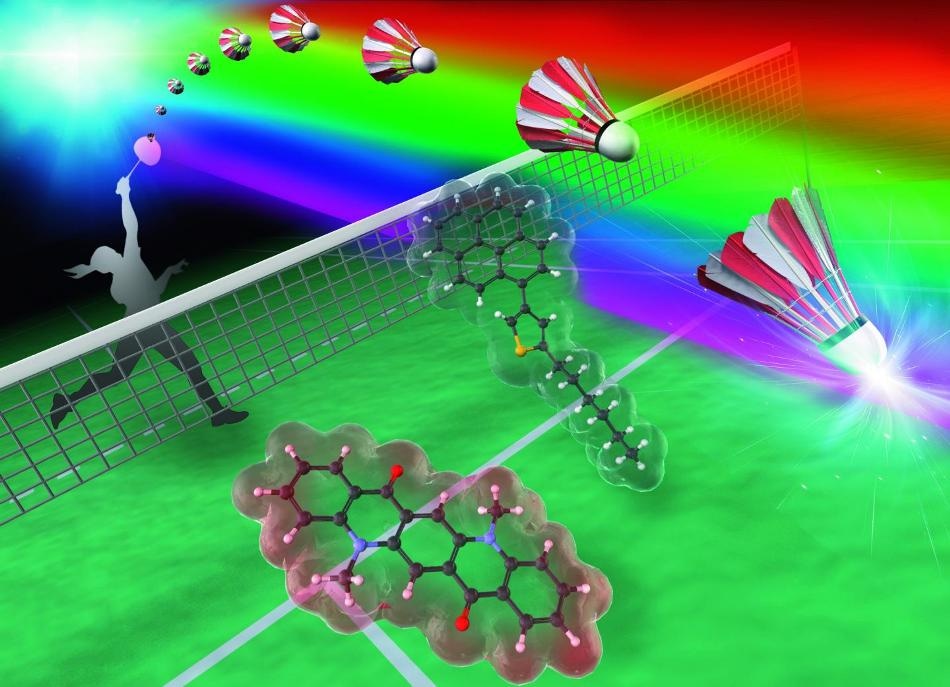 By Sabina AliOct 25 2019
By Sabina AliOct 25 2019Basic elements such as hydrogen, carbon, oxygen, and so on are the building blocks of rationally designed chemicals. Such elements can be mixed in various ways to achieve a variety of chemicals with diverse characteristics.
 The two-component dye shows self-recovering mechanochromic luminescence that exhibits a high-contrast emission color change between violet and orange. (Image credit: Yokohama National University)
The two-component dye shows self-recovering mechanochromic luminescence that exhibits a high-contrast emission color change between violet and orange. (Image credit: Yokohama National University)
Moreover, the same chemical can be treated in a different way, for instance, under pressure or heat, to exhibit very different properties. An easy way is to consider how water is boiled to cook pasta or cooled to become ice. Here, the same ingredient — water — is converted into two different states by temperature treatment.
Currently, scientists have been making efforts to better manipulate how the chemicals react to treatment, and how to convert the chemicals back to their initial state with very little to no interference. This would enable them to design the sensing systems of environmental stimuli and repeat the sensing without interruptions.
This has been achieved by scientists at Yokohama National University using a specific compound. This compound discharges light and finds prospective applications in next-generation smart devices like anti-counterfeiting paintings and wearable devices. The findings were reported online on September 12th, 2019, before print, in Chemical Communications.
The compound is a thiophene derivative, a dye that has mechanochromic luminescence properties and can change color when subjected to physical change. When irradiated with UV light, it begins to emit a violet glow. However, when subjected to mechanical stimuli, like grinding, the violet glow turns slightly blue. Another external intervention can restore the compound to become violet once more.
Mechanochromically luminescent (MCL) dyes have recently attracted considerable interest on account of their potential applications. However, it is still very difficult to rationally design MCL dyes with desired characteristics.
Suguru Ito, Study Author and Associate Professor, Department of Chemistry and Life Science, Graduate School of Engineering Science, Yokohama National University
However, researchers have found that the addition of DMQA, another chemical, changed the color of the dye to orange under mechanical stimuli. The dye did not require further external stimuli to convert back into violet either.
We combined two kinds of rational design guidelines for tuning the luminescent properties, resulting in the desired—and unprecedented—characteristics of high-contrast, self-recovering dyes.
Suguru Ito, Study Author and Associate Professor, Department of Chemistry and Life Science, Graduate School of Engineering Science, Yokohama National University
There are two rational design guidelines: First, the recovery behavior of the dye is probably due to the length of the alkyl group in the compound — the dye that has a longer carbon chain with hydrogens can recrystallize and heal in time. Second, when mixed with DMQA, the range of colors between the original state and ground state differs significantly.
The next step is to establish a rational design guideline to control the dye's responsiveness to mechanical stimuli. My ultimate goal is to develop an innovative pressure-sensing system by rationally creating a material that can change its emission color in stages in response to mechanical stimuli of different intensity.
Suguru Ito, Study Author and Associate Professor, Department of Chemistry and Life Science, Graduate School of Engineering Science, Yokohama National University
Such a control enabled Ito to use mechanical stimuli to precisely induce a particular, desired response. With small pressure, the violet glow could be shifted to blue. With further increase in pressure, the glow could be moved closer to red.
Ito stated that a system with such a potential would enable stepwise changes and recoveries by the stimulus, thus proving useful in developing the future generation of smart materials.
Minako Ikeya and Genki Katada, both from the Department of Chemistry and Life Science in the Graduate School of Engineering Science at Yokohama National University, also authored the paper.
This study was partially supported by the Japan Society for the Promotion of Science KAKENHI Grant Number 18H04508 in Grant-in-Aid for Scientific Research on Innovative Areas “Soft Crystals: Area No. 2903.”